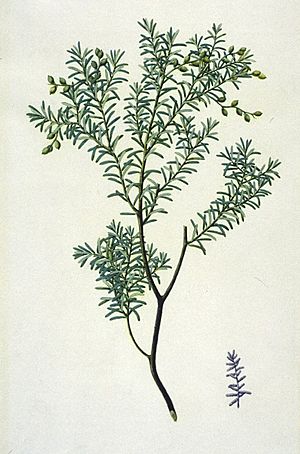Heterocrossa iophaea facts for kids
Quick facts for kids Heterocrossa iophaea |
|
|---|---|
| Scientific classification | |
| Kingdom: | |
| Phylum: | |
| Class: | |
| Order: | |
| Family: |
Carposinidae
|
| Genus: | |
| Species: |
H. iophaea
|
| Binomial name | |
| Heterocrossa iophaea Meyrick, 1907
|
|
| Synonyms | |
|
|
Heterocrossa iophaea is a special kind of moth found only in New Zealand. It belongs to a group of moths called Carposinidae. This moth is endemic to New Zealand, which means it naturally lives nowhere else in the world.
Contents
Discovering the Heterocrossa iophaea Moth
This moth was first described by a scientist named Edward Meyrick in 1907. He studied moths collected by Alfred Philpott in Invercargill, New Zealand.
How Its Name Changed
Over time, scientists sometimes change how they classify animals. In 1922, Meyrick thought this moth belonged to a different group, Carposina. So, it was sometimes called Carposina iophaea.
Later, in 1978, another scientist, Elwood Zimmerman, looked closely at the moth's body parts. He realized that moths in the Heterocrossa group were unique. He argued they should not be mixed with Carposina.
Finally, in 1988, John S. Dugdale agreed. He put the moth back into the Heterocrossa group. He also found that another moth, Heterocrossa thalamota, was actually the same species as Heterocrossa iophaea. The main example specimen of this moth is kept safe at the Natural History Museum, London.
Where This Moth Lives
This moth is found only in New Zealand. It has been seen in many places across both the North and South Islands.
South Island Locations
Besides Invercargill, where it was first found, you can also find this moth in places like Wyndham. It lives in the Peel Forest in Canterbury and the Waiho Gorge in Westland. It has also been seen near the Puhi Puhi River in Marlborough.
North Island Locations
In the North Island, this moth has been collected in areas like Whakapapa and Whangarei. It also lives in Hawkes Bay and Waimarino in the Bay of Plenty region. You can also find it in Price's Bush in the Tararua Range.
Moth Life and Habits
You can usually see the adult Heterocrossa iophaea moths flying between October and February.
Daily Activities
During the day, these moths like to rest on tree trunks. They also hide among the small branches and leaves on the ground. The way they fold their wings helps them find good hiding spots.
Attracted to Light
Like many moths, Heterocrossa iophaea is attracted to light. Scientists have also found these moths by gently shaking bushes, which makes the moths fly out.
Home and Food for the Moth
This moth lives in native New Zealand forests. The young moths, called larvae, have a special diet.
What the Larvae Eat
The larvae of Heterocrossa iophaea eat the seeds of the mataī tree (Prumnopitys taxifolia). When the seeds are young, the larvae eat the inside parts. As the seeds get older, the larvae switch to eating the sweet outer parts of the seed. After they finish eating, they change into pupae, which is the next stage before becoming an adult moth.
Images for kids



